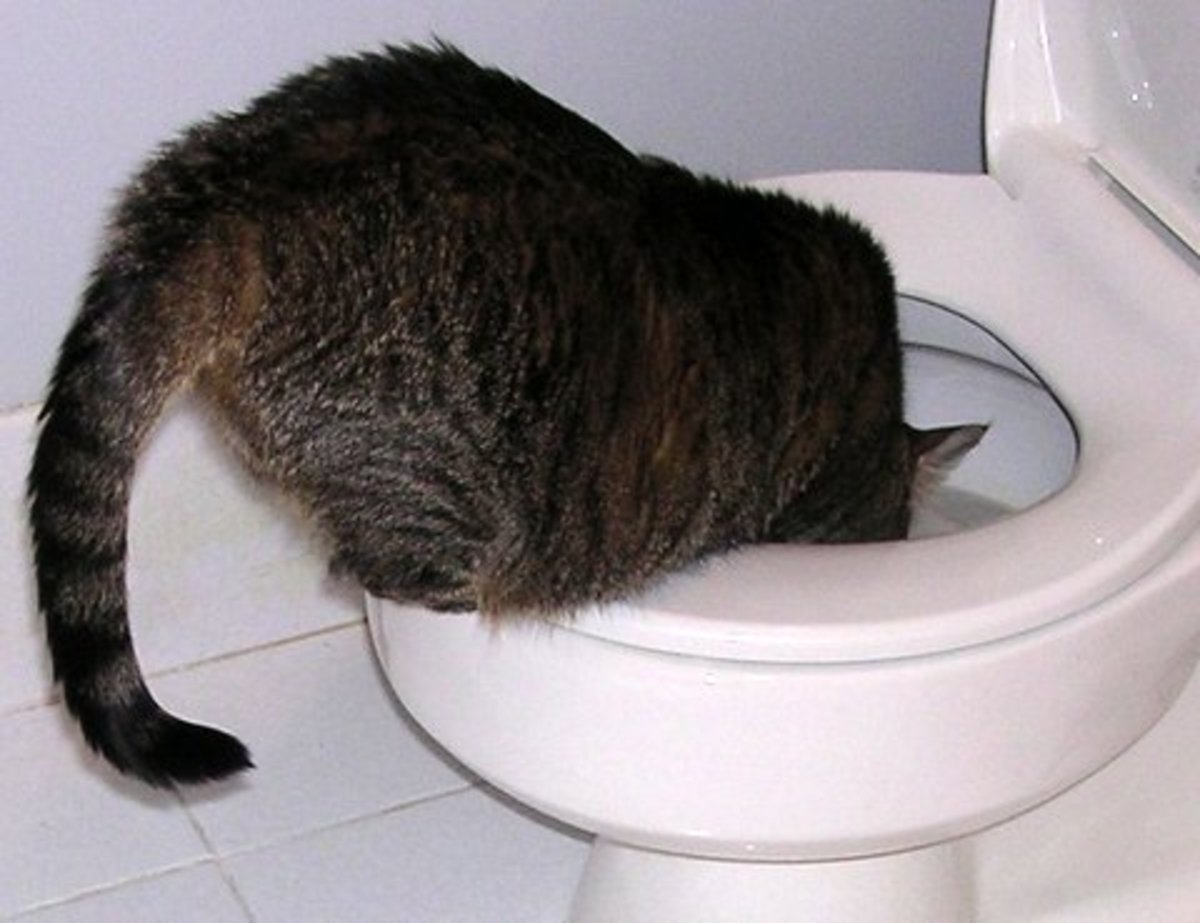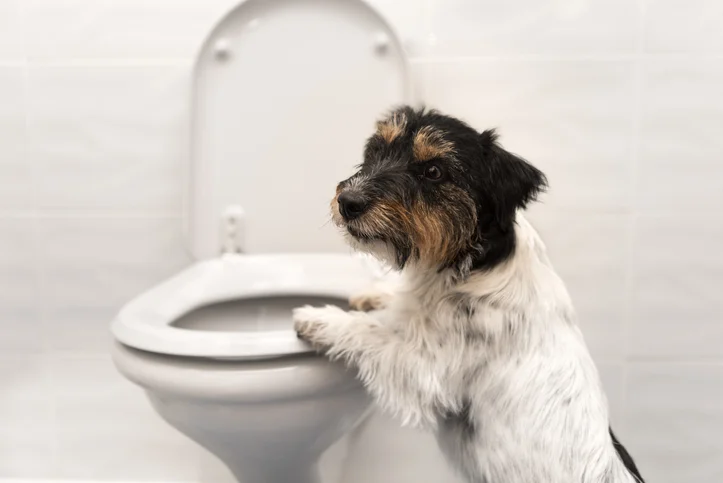Causes Why You Need to Never Get rid of Animal Waste Down the Toilet
Causes Why You Need to Never Get rid of Animal Waste Down the Toilet
Blog Article
We've encountered this article on Don't Flush Your Pets Poo Down The Loo, Vet Warns directly below on the internet and felt it made perfect sense to write about it with you here.

When it concerns getting rid of waste, specifically animal waste, many people frequently turn to the convenient choice of flushing it down the toilet. Nonetheless, this apparently very easy remedy can have major repercussions for the atmosphere and public health. In this article, we'll discover why flushing animal waste down the toilet is a negative idea and give alternate methods for proper disposal.
Intro
Correct waste disposal is essential for maintaining environmental sustainability and public health. While it might appear safe to purge animal waste down the commode, it can result in different concerns, both for the atmosphere and human wellness.
Risks of flushing pet waste
Environmental impact
Purging animal waste introduces hazardous microorganisms and virus right into waterways, which can adversely affect marine environments. These virus can pollute water resources and damage marine life, disrupting delicate ecological communities.
Public health concerns
Pet waste consists of unsafe microorganisms such as E. coli and Salmonella, which can posture serious wellness risks to humans. Flushing animal waste down the toilet can infect water materials, bring about the spread of diseases and infections.
Alternatives to flushing
As opposed to flushing pet waste down the toilet, there are several alternative disposal approaches that are a lot more eco-friendly and sanitary.
Composting
Composting pet waste is a green way to deal with it. By composting, organic matter is broken down right into nutrient-rich soil, which can be made use of to fertilize yards and plants.
Landfill disposal
Disposing of animal waste in a garbage dump is another alternative. While not as environmentally friendly as composting, it is a much safer choice to flushing, as it protects against the contamination of water sources.
Animal waste disposal systems
There are specialized family pet waste disposal systems available that safely and hygienically throw away animal waste. These systems often make use of enzymes to break down waste and remove smells.
Steps to appropriate animal garbage disposal
To ensure correct disposal of animal waste, adhere to these actions:
Scooping and getting waste
Regularly scoop and bag animal waste making use of eco-friendly bags. This protects against waste from contaminating the environment.
Making use of marked waste containers
Dispose of bagged animal waste in assigned waste bins, such as garden compost bins or landfill bins. Stay clear of flushing it down the bathroom whatsoever prices.
Cleansing litter boxes and animal locations regularly
Routinely tidy can and pet dog areas to stop the build-up of waste and germs. Use pet-safe cleaning products to keep health.
Advantages of proper disposal techniques
Adopting proper disposal approaches for animal waste offers several advantages:
Minimized environmental pollution
Proper disposal methods reduce the risk of environmental pollution, securing rivers and environments from contamination
Reduced risk of water contamination.
By staying clear of flushing animal waste down the bathroom, the danger of water contamination is considerably lowered, safeguarding public health.
Boosted cleanliness and hygiene
Appropriate disposal approaches advertise much better sanitation and health, developing a safer environment for both humans and pets.
Conclusion
Finally, purging animal waste down the bathroom is hazardous to the environment and public health. By adopting alternative disposal techniques and following proper waste monitoring practices, we can reduce the unfavorable impact of animal waste and add to a cleaner, healthier world.
What To Do With Dog Poo – The Do's And Don'ts Of Disposing Of Faeces
Dog poo bins
Some councils provide dedicated dog waste bins in popular dog-walking areas that can take dog poo that has been bagged but you can legally dispose of dog waste in any public litter bin, as long as it is securely bagged. This also applies to your wheelie bin at home.
Do not flush
Water companies do not recommend flushing dog faeces down the toilet because certain parasites can survive the water processing treatment and are potentially harmful to humans. You should also never consider flushing dog poo that has been bagged down the toilet as the bags will not break down and instead create severe blockages in the sewage system.
In the woods
The Forestry Commission promotes a ‘stick and flick’ method for dealing with waste in the woods. This means finding a stick and using it to flick any poo from off the path so that it is out of the way of other walkers. You could also bury it as long as it is not in an area where there might be livestock.
Livestock
Parasites found in dog poo can be transmitted to livestock if they inadvertently eat infected faeces that has been left on grazing land. This could result in the death of sheep or abortion in cattle so you should always make sure you pick up your dog’s waste in fields where livestock could be present.

Routinely tidy can and pet dog areas to stop the build-up of waste and germs. Use pet-safe cleaning products to keep health.
Advantages of proper disposal techniques
Adopting proper disposal approaches for animal waste offers several advantages:
Minimized environmental pollution
Proper disposal methods reduce the risk of environmental pollution, securing rivers and environments from contamination
Reduced risk of water contamination.
By staying clear of flushing animal waste down the bathroom, the danger of water contamination is considerably lowered, safeguarding public health.
Boosted cleanliness and hygiene
Appropriate disposal approaches advertise much better sanitation and health, developing a safer environment for both humans and pets.
Conclusion
Finally, purging animal waste down the bathroom is hazardous to the environment and public health. By adopting alternative disposal techniques and following proper waste monitoring practices, we can reduce the unfavorable impact of animal waste and add to a cleaner, healthier world.
What To Do With Dog Poo – The Do's And Don'ts Of Disposing Of Faeces
Dog poo bins
Some councils provide dedicated dog waste bins in popular dog-walking areas that can take dog poo that has been bagged but you can legally dispose of dog waste in any public litter bin, as long as it is securely bagged. This also applies to your wheelie bin at home.
Do not flush
Water companies do not recommend flushing dog faeces down the toilet because certain parasites can survive the water processing treatment and are potentially harmful to humans. You should also never consider flushing dog poo that has been bagged down the toilet as the bags will not break down and instead create severe blockages in the sewage system.
In the woods
The Forestry Commission promotes a ‘stick and flick’ method for dealing with waste in the woods. This means finding a stick and using it to flick any poo from off the path so that it is out of the way of other walkers. You could also bury it as long as it is not in an area where there might be livestock.
Livestock
Parasites found in dog poo can be transmitted to livestock if they inadvertently eat infected faeces that has been left on grazing land. This could result in the death of sheep or abortion in cattle so you should always make sure you pick up your dog’s waste in fields where livestock could be present.

As a passionate reader on Should you flush animal waste down the toilet, I figured sharing that piece of content was really useful. Enjoyed reading our piece? Please share it. Let another person check it out. We enjoy your readership.
Call Report this page